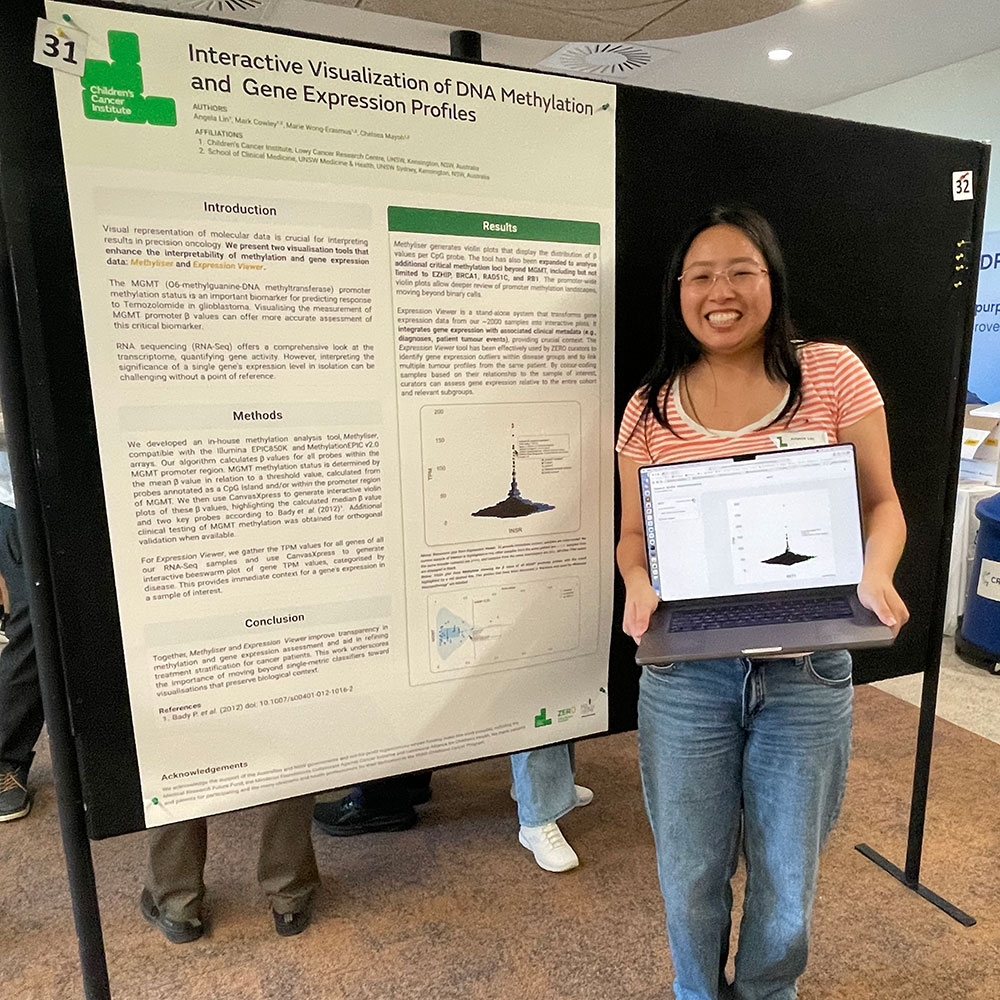Scientists in our Molecular Carcinogenesis team have identified a naturally-occurring molecule, called miR-204, that inhibits a cancer-causing gene called MYCN. Their findings were published this week in the journal Cancer Research.
The MYCN gene has long been known to play an important role in the childhood cancer neuroblastoma. Around 20% of children with neuroblastoma have multiple copies of MYCN in their tumour cells. This makes these tumours more aggressive and is a powerful indicator of poor patient outcome.
Controlling the controller
MYCN acts as a ‘master switch’, controlling a multitude of genes that drive the formation, growth and spread of neuroblastoma tumours. For this reason, scientists have been trying for many years to block its activity, but this has proven extremely difficult. Our researchers took a different approach, looking instead for something already inside neuroblastoma cells that could rein in this runaway gene.
They focused on two types of molecules involved in the production of proteins: messenger RNAs (mRNAs) and microRNAs (miRs). mRNAs carry the messages sent out by genes. They provide the templates for constructing proteins, while miRs provide the oversight – regulating the amounts of the different mRNA templates present, thus ensuring that the right amount of each protein is made at the right time and right place for cells to function properly.
In normal cells this regulation applies to MYCN protein too, but in neuroblastoma cells with multiple copies of the MYCN gene (known as MYCN-amplified neuroblastoma) it no longer works. Our researchers wanted to identify the specific miRs that normally regulate MYCN protein production, with a view to making them work again in neuroblastoma. They wanted to find a way of controlling the controller.
Mapping interactive networks
Using computer modelling, they created maps that predict the interactions between mRNAs and miRs, either in normal cells, or in cells they knew would go on to become neuroblastoma. By comparing these maps, their model predicted that one miR in particular, miR-204, should have strong tumour-suppressing activity.
This is because the model showed miR-204 inhibiting a whole network of cancer-promoting genes that are strongly associated with MYCN-amplified neuroblastoma.

A computer-generated map predicting the interactions between miR-204 and mRNAs
So, the model predicted that miR-204 should suppress the growth of tumours. However, when our scientists looked at what was happening in neuroblastoma cells with multiple copies of MYCN, they found that miR-204 was being hamstrung. MYCN was switching off miR-204 before miR-204 could switch off MYCN.
Overriding the master switch
Could the balance be tipped the other way? The answer was yes. When our researchers artificially increased the amount of miR-204 in cells, they found that MYCN protein levels went down, and the cells grew more slowly. More excitingly, in a mouse model of neuroblastoma, when miR-204 was over-expressed, tumour growth was significantly delayed.
This finding not only increases our knowledge of the biology of neuroblastoma, it also points to possible new therapies. For the first time, miR-204 has been identified as a target for treating MYCN-amplified neuroblastoma. Synthetic molecules that mimic other miRs are already being tested against other cancers, such as colon, lung, liver and ovarian cancer. Alternatively, there may be a way to re-activate the suppressed miR-204 already inside cells, wresting back control from the runaway MYCN gene. Further research should tell us which of these options works best.
Read the research article.
Top image: cells with the normal amount of the MYCN gene (left), and cells with multiple copies of MYCN (right)















